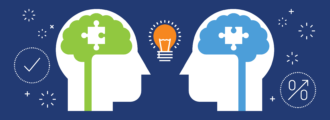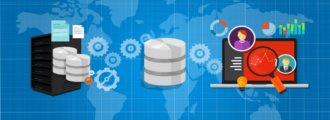We’ve written a bit about keeping JD Edwards code current before—if you haven’t read our article about Oracle extending JD Edwards Premier Support, check it out now—but we’d like to look a little closer at what the phrase actually means, as well as the benefits of continuous delivery and how to strategize when it comes to keeping your organization code current.
Code Current and Continuous Delivery
Up until recently, the upgrade cycle for JD Edwards was a bit like rainstorms in the desert—nothing at all for long stretches of time, and then a heck of a lot at once. In response, organizations that ran off JD Edwards needed to adapt to that style of upgrade cycle: significant periods of stability punctuated by sudden and rapid changes. But with the onset of continuous delivery, Oracle and JD Edwards are changing things up by releasing new features (a mix of tech and functionality) roughly every quarter, as well as as-needed updates (bundling together feature packs) about once a year.
Keeping JD Edwards code current simply means taking advantages of those new feature releases as they come out, ensuring your organization’s version of JDE is able to take advantage of all the benefits that Oracle’s software engineers are cooking up.
Benefits of Continuous Delivery for JD Edwards Users
We know that adjusting to new software can sometimes be a bit of a hassle, but don’t let that discourage you from keeping JD Edwards code current. There are plenty of benefits to continuous development, including…
Avoid Major Upgrade Headaches
Say goodbye to those enormous upgrade projects. Continuous delivery makes for a more stable operational spending model on whatever interval makes the most sense for your business. More frequent, periodic updates make for a manageable implementation cycle that should reduce the impact of your JD Edwards modifications as well as help to lower the cost of retrofitting.
Helps Reduce Risk
If you’re only updating your software every 3 (or 4 or 5) years, you’re leaving gaps in your technology security-wise. Staying code current can help keep you protected with all the latest and greatest security patches (not to mention staying compliant with the browsers and operating systems you use).
Enables Your Tech
Speaking of the latest and greatest, keeping JD Edwards code current through the continuous delivery model allows you to enable your technology, including mobile and IoT-connected devices. Having a lot of advanced technology isn’t going to do you much good if you have to wait a few years to get it to play nicely with your system, after all.
Keeps You Adaptable
If your business is code current, you can be flexible, proactive, and adapt to the latest trends more easily. Say your organization suddenly has a merger, or acquisition, or goes through some other major change—having the most up-to-date software will help you move quickly and support your business much more smoothly.
Get a Leg Up On the Competition
Taking advantage of the continuous delivery model to keep JDE code current allows you to create a strategic advantage for your business compared to the competition. After all, if your biggest competitor is periodically having to deal with major software changes while you’re managing a much smoother upgrade path, who do you think is going to be more efficient?
Opportunity to Rethink Current Setup
Thanks to its extensive customer base, Oracle’s software engineers are always getting ideas for new functionalities and tools that you can take advantage of. A shorter upgrade cycle allows you to take a hard look at your current customizations and ask whether something better for JD Edwards is now available from Oracle. A more frequent upgrade cycle also gives you the opportunity to look at your setup and decide what is and isn’t working for you. (Do you really need all these objects, or did somebody develop that one report a few years back for somebody and now it’s just dead weight?)
Strategies for Keeping JD Edwards Code Current through Continuous Delivery
Obviously, knowing the benefits of continuous delivery and keeping JD Edwards code current is only half the battle. The other half is creating a strategy to take advantage of those benefits. Here are some helpful tips on how to get started:
Be Aware of the Latest Updates
Keep an eye on what ESUs (electronic software upgrades), updates, and features are being released each quarter and which ones would make sense to implement at your company. You may not know what’s coming out before it arrives, but check Oracle’s website periodically to learn about all the latest improvements.
Communicate Expectations for All Stakeholders (Internal and External)
Not only will your stakeholders need to know what’s out there in terms of upgrades, but also how those upgrades will affect your current business process, where your organization needs to focus, whether dev effort will be required for the ESUs that you choose to implement, and more. That’s why it’s important to have a well-communicated corporate policy when it comes to software updates. Make sure you’re clear on what the expectations are for everyone involved in keeping the company code current, including internal employees and external team members, such as consultants.
Develop a Plan (but Be Flexible)
Don’t be vague—pick a firm date on your calendar that works for you and your team for when you’ll have the spare bandwidth to make updates (and remember, because these upgrades are smaller than the traditional ones, you won’t need to spare as much bandwidth). Also, keep in mind that your plan will change depending on how many modifications you’re going to make, as well as any other more pressing business needs that arise.
Reminder: While upgrades come out roughly once a quarter from Oracle in the continuous delivery model, if applying them that often would be a big burden on your business, or if the most current ESUs aren’t relevant to you, feel free to wait a little longer—if twice-yearly or annual upgrades makes more sense for your org, go with that. The key is not to wait too long, but long enough that you have the resources and availability to put these changes into motion. (If you wait too long, you’re not really keeping code current, are you?)
Don’t Forget About Testing
Even if you’re only pushing out smaller updates and not big massive system changes, you still want to make sure you test everything thoroughly to ensure that a process which should save you time actually does so.
These strategies may seem like common sense, but it’s easy to get off track when trying to develop a new good habit. (Research shows it can take anywhere from 18 days to 254 days for individuals to stick to a new habit. Imagine, then, how long it’ll take a group of people to stick to one.) But we believe in you! Keep your team on-target, and a code-current company is a reachable goal.
Need help keeping JD Edwards code current? Not to worry! Surety Systems has your back. Our wide network of senior-level JD Edwards consultants are not only up on the latest ESUs Oracle has to offer, but able to assist you in figuring out which ones would give you the most bang for your buck, complete with a strategy customized for your business. Don’t put off the benefits of continuous delivery—contact us today.




